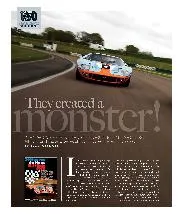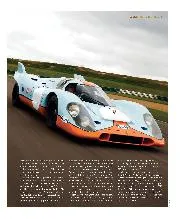The damaged Chassis 026, with a 4.5-litre engine, rather than the 5-litre version in the sister JWA cars, was repaired and renamed 031. It was rebodied as an open-topped Spyder and saw service in the European InterSerie Championship, for Group 7 sports racing cars, between 1971 and 1973 before retiring from the professional scene. It was bought by Olivier Chandon, the racing driver heir to the Moët et Chandon fortune.
In private ownership since then, the car was eventually restored to its 1970 specification, including its distinctive Gulf livery, with an orange stripe that runs down to the beltline, unlike the narrower strip on the sister JWA cars.
RM Sotheby’s said that the car “represents a singular opportunity to acquire not just an icon, but the archetypal example of the car widely regarded as ‘the greatest sports racing car ever’.”
How much that is worth will become apparent in August at the Monterey Auction in California.

Car No22 in action at Le Mans
Alamy
The current Porsche auction record of $14.08m is held by another Gulf-liveried 917 K, also driven by Hailwood in 1970. Chassis No24 was the first 917 to see competition at the 100Km of Spa, in its original, unstable configuration. Converted to short-tail ‘K’ spec, it was bought by Jo Siffert and leased to Solar Productions for the making of McQueen’s Le Mans film — where it was also marked up as Car No22, but had considerably more success in the fictional version of the race.
Hailwood and Brian Redman used the car at the 1970 Le Mans test day, but it wasn’t entered into the race. Siffert took the car back when filming ended, and the car led his funeral procession a year later before disappearing into storage.







